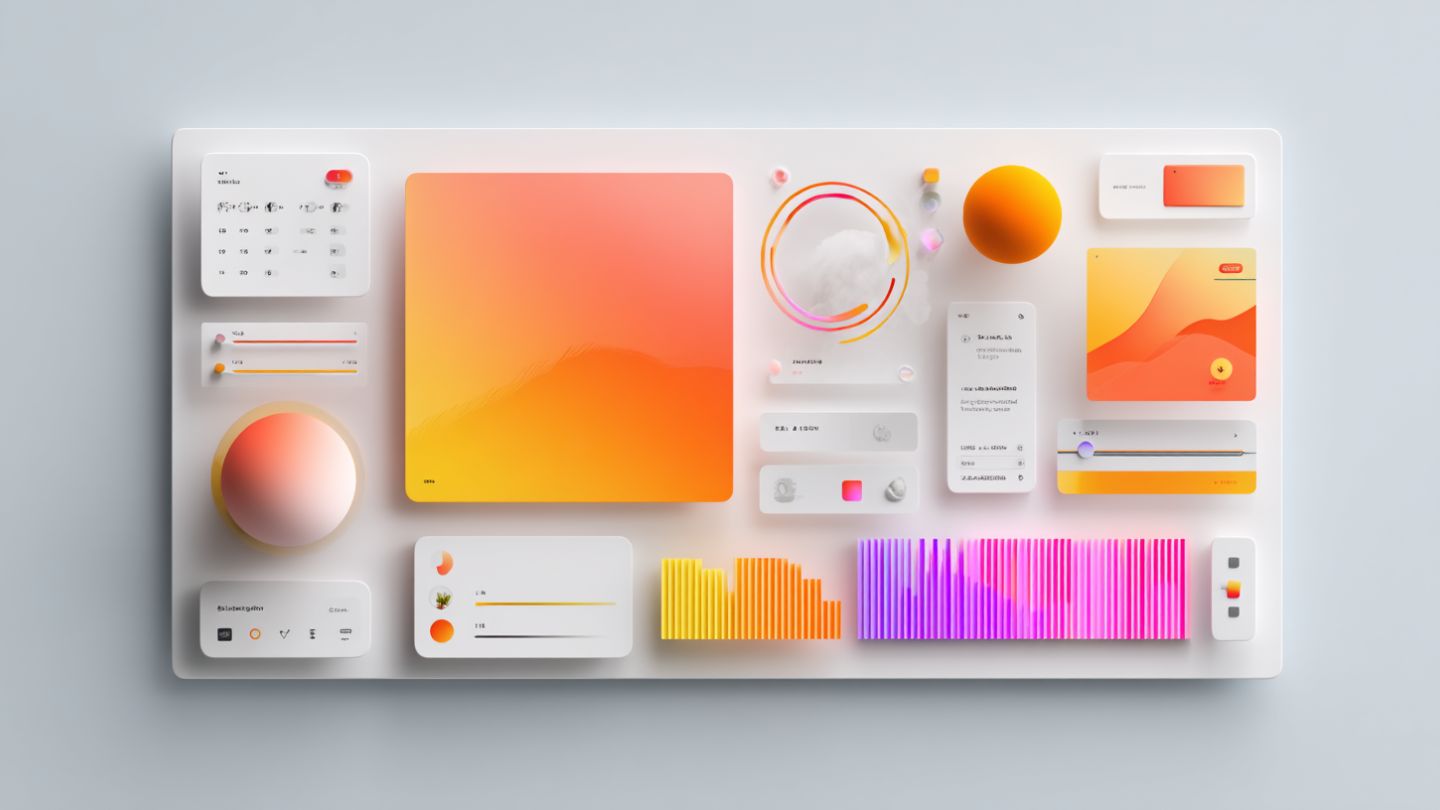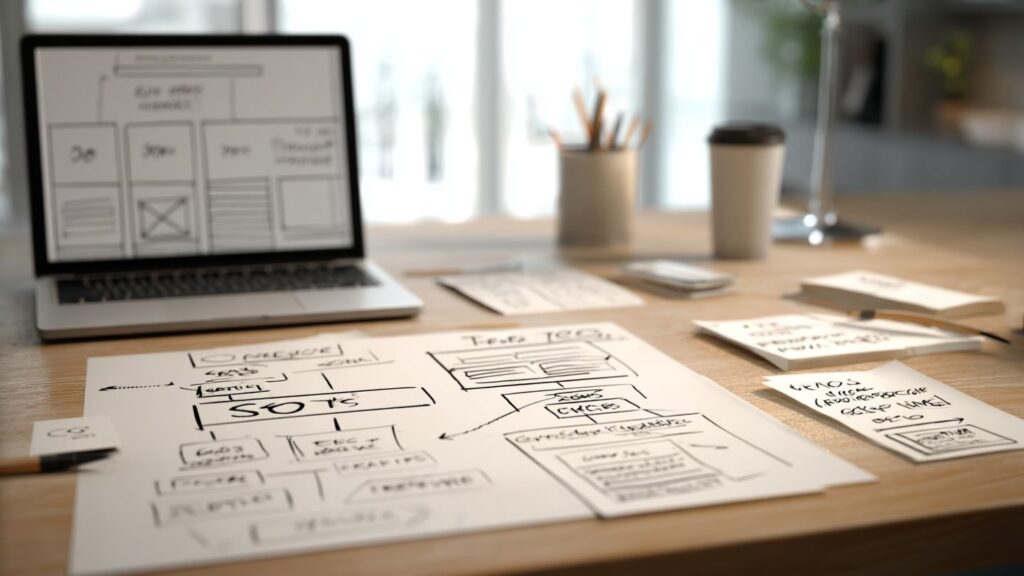Web design evolves rapidly, and staying ahead is crucial for creating engaging, user-friendly websites. This year’s latest trends emphasise bold visuals, seamless functionality, and enhanced user experiences. Here’s a deep dive into what’s hot and what’s fading in web design, packed with insights for designers, developers, and businesses aiming to optimise their online presence.
What’s Hot in Web Design
1. Minimalism with a Purpose
Minimalist design remains a powerhouse, but this year, it’s about intentional simplicity. Clean layouts, ample white space, and focused content create clutter-free interfaces that guide users effortlessly. Think single-column layouts with bold typography and subtle animations that enhance, not distract. Minimalism boosts load times, a critical factor since Google prioritises speed in rankings.
Why it works: Users crave clarity. A minimalist site with intuitive navigation reduces bounce rates and keeps visitors engaged.
2. Bold Typography
Typography is stealing the spotlight. Oversized, custom fonts and creative text arrangements dominate hero sections, conveying brand personality instantly. Sans-serif fonts like Helvetica and futuristic styles are trending, often paired with vibrant colours or gradients. Designers are also experimenting with variable fonts for flexibility across devices.
Why it works: Big, bold text grabs attention and improves readability, especially on mobile devices, which account for over 50% of web traffic.
3. Vibrant Colours and Gradients
Colour palettes are getting louder. Bright, saturated hues and dynamic gradients replace muted tones, creating eye-catching designs. Tools like Adobe Colour and Coolors make it easy to craft unique schemes. The rise of dark mode interfaces also pushes designers to use neon accents for contrast.
Why it works: Vibrant colours evoke emotions and make brands memorable. Gradients add depth, especially in flat design.
4. Micro-Animations and Interactive Elements
Micro-animations—subtle motion effects like button hovers or scrolling transitions—are everywhere. They add polish and guide user interactions without overwhelming them. Interactive elements, like parallax scrolling or hover-triggered visuals, create immersive experiences. Video backgrounds and 3D graphics are also gaining traction for storytelling.
Why it works: Animations enhance engagement, and studies show that interactive sites increase time on page by up to 20%.
5. Mobile-First Design
With mobile browsing surpassing desktop, mobile-first design is non-negotiable. Responsive layouts, touch-friendly navigation, and AMP (Accelerated Mobile Pages) are must-haves. Designers prioritise thumb-friendly buttons and vertical scrolling for one-handed use. Progressive Web Apps (PWAs) are also trending, blending app-like experiences with web accessibility.
Why it works: Google’s mobile-first indexing means mobile-optimised sites rank higher, and users expect seamless experiences across devices.
6. Voice User Interface (VUI) Integration
Voice search is booming, with 40% of adults using it daily. Websites are integrating VUI for hands-free navigation, especially in e-commerce and service industries. Think voice-activated menus or chatbots powered by AI, like those built with Dialogflow or Amazon Lex.
Why it works: VUI caters to convenience-driven users and boosts accessibility for visually impaired audiences.
7. Asymmetrical Layouts
Symmetry is out; asymmetry is in. Off-grid layouts and unconventional image placements create dynamic, modern aesthetics. Designers balance chaos with structure, using white space to prevent clutter. This trend pairs well with bold typography and abstract shapes.
Why it works: Asymmetry feels fresh and artistic, helping brands stand out in a sea of cookie-cutter designs.
What’s Not in Web Design
1. Overloaded Designs
Cluttered layouts with excessive pop-ups, banners, or auto-playing videos are losing favour. Users want simplicity, and search engines penalise sites that overwhelm. If it doesn’t serve a purpose, cut it.
Why it’s fading: Overloaded designs frustrate users, with 70% abandoning sites that take over 3 seconds to load.
2. Generic Stock Imagery
Cheesy stock photos are a relic. Authentic, custom visuals—like original photography or illustrations—resonate more. Tools like Canva and Unsplash offer high-quality alternatives for budget-conscious brands.
Why it’s fading: Generic imagery feels inauthentic, eroding trust in a brand.
3. Flash-Based Websites
Flash is officially dead. HTML5, CSS3, and JavaScript deliver richer, faster, and SEO-friendly experiences. Browsers like Chrome and Safari no longer support Flash, making it obsolete.
Why it’s fading: Flash is slow, insecure, and incompatible with modern web standards.
4. Rigid Grid Layouts
Boxy, predictable grids are being replaced by fluid, organic designs. Users crave creativity, and rigid structures feel dated—flexible frameworks like Bootstrap 4 support more experimental layouts.
Why it’s fading: Uniform grids limit visual storytelling and bore users.
5. Desktop-Only Focus
Designing for desktop first is a costly mistake. Sites that ignore mobile optimisation lose traffic and rankings. Even small businesses now prioritise responsive design to capture the growing mobile audience.
Why it’s fading: Mobile users dominate, and Google’s algorithms favour mobile-friendly sites.
How to Stay Ahead
To leverage these trends, start with a user-centric approach. Audit your site for speed, mobile compatibility, and accessibility. Experiment with bold visuals but maintain functionality—form should never trump function. Use tools like Figma for prototyping, Lighthouse for performance testing, and Hotjar for user behaviour insights. Stay updated via design blogs like Smashing Magazine or Awwwards for inspiration.
The latest web design trends are about creating memorable, intuitive experiences that resonate with users. By embracing minimalism, bold aesthetics, and cutting-edge tech like VUI, you can build a trendy and timeless site. Ditch outdated practices like Flash and cluttered layouts to keep your brand relevant. Ready to transform your website? Contact Whizz People today for a free consultation and let our experts help you craft a stunning, future-proof online presence.



